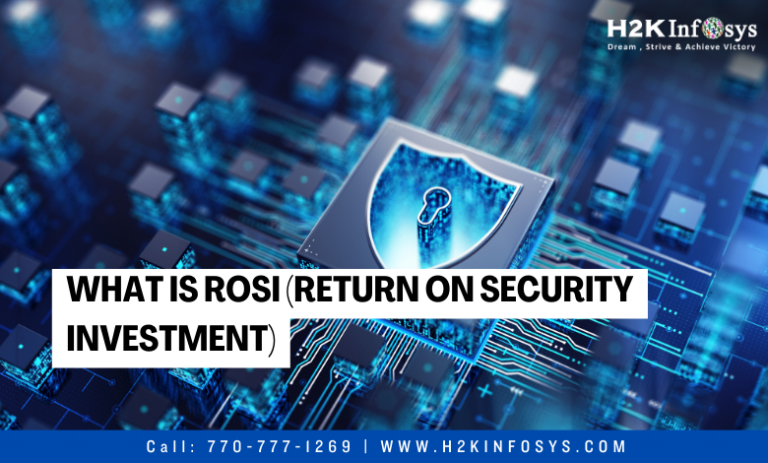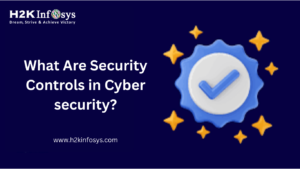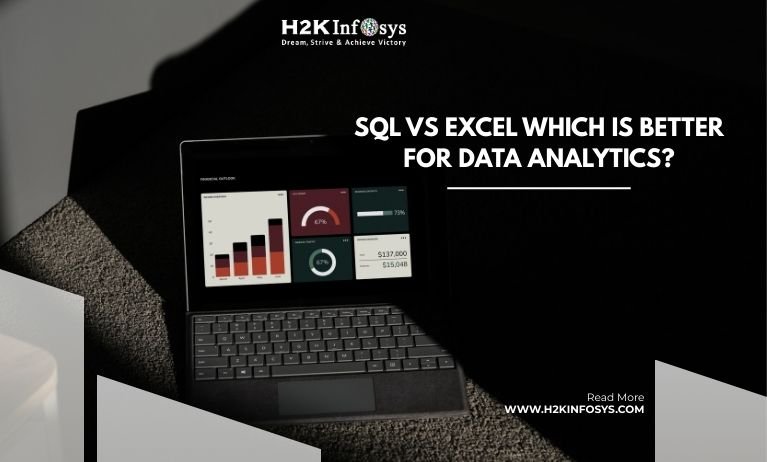Introduction: Why Measuring Security Value Matters Today
Cyber threats continue to grow in number and impact. Organizations invest heavily in firewalls, endpoint tools, cloud security, monitoring platforms, and skilled security teams. However, business leaders ask a critical question before approving budgets: Does this security investment actually reduce risk?
This question leads directly to ROSI. ROSI, or Return on Security Investment, helps organizations measure the financial value of cybersecurity investments. It explains how much potential loss an organization avoids by implementing security controls. It turns cybersecurity from a technical topic into a business-driven discussion.
For learners in cyber security training, understanding ROSI builds strong analytical and decision-making skills. These skills are essential for roles aligned with CEH Certification, online classes cyber security, and Cyber security analyst training online programs. Security professionals who understand ROSI can communicate clearly with management and justify security decisions using data.
What Is Return on Security Investment?
It is a metric that evaluates whether a cybersecurity investment is financially effective. It compares the cost of a security control with the amount of cyber risk it reduces.
In cybersecurity:
- It focuses on preventing loss.
- It measures reduced risk exposure.
- It supports informed security decisions.
Traditional ROI measures profit increase. It measures avoided damage. This difference makes ROSI unique and essential in cybersecurity management.
Why Is Critical in Cybersecurity Strategy
Cybersecurity Is a Business Risk Issue
Cyber incidents cause financial damage, legal penalties, and loss of trust. It helps organizations understand cybersecurity as a business risk problem rather than a technical problem.
Security Budgets Face Scrutiny
Organizations operate with limited budgets. It helps security teams prioritize investments that deliver the highest risk reduction.
Accountability and Governance
Security leaders must justify decisions. It provides documented evidence for audits and compliance reviews.
Career Relevance for Security Professionals
Employers expect professionals to:
- Analyze risk
- Justify controls
- Communicate value
These expectations make Return on Security Investment a core topic in cyber security training and placement and cyber security training and job placement programs.
Key Components Used in ROSI Calculations
1. Asset Value
Asset value represents what the organization protects. It calculations start with identifying high-value assets.
Examples include:
- Customer personal data
- Financial systems
- Business-critical applications
- Intellectual property
Higher asset value increases potential loss. Higher loss increases the importance of Return on Security Investment.
2. Threat Likelihood
Threat likelihood defines how often an attack may occur. It relies on realistic threat estimates.
Security teams analyze:
- Past incidents
- Internal vulnerabilities
- Industry threat trends
Accurate likelihood improves Return on Security Investment accuracy.
3. Annual Loss Expectancy (ALE)
ALE estimates how much loss a threat can cause in one year. It uses ALE to measure baseline risk.
Formula:
ALE = Single Loss Expectancy × Annual Rate of Occurrence
ALE allows organizations to quantify risk in financial terms.
4. Cost of Security Investment
Security investment cost includes:
- Software licenses
- Hardware
- Deployment effort
- Training and support
Complete cost visibility ensures realistic Return on Security Investment calculations.
Return on Security Investment Formula Explained Clearly
The standard formula is:
ROSI = (Risk Reduction Value – Cost of Security Investment) / Cost of Security Investment
Where:
- Risk Reduction Value equals reduced ALE
- Cost equals total annual security spend
A positive indicates a value. A negative signals poor investment.
Step-by-Step Example With Explanation
Scenario: Phishing Email Security
An organization faces repeated phishing attacks.
Before Security Control:
- Single Loss Expectancy = ₹8,00,000
- Annual Rate of Occurrence = 3
- ALE = ₹24,00,000
After Security Control:
- New Annual Rate of Occurrence = 1
- New ALE = ₹8,00,000
Risk Reduction Value:
- ₹24,00,000 − ₹8,00,000 = ₹16,00,000
Security Cost:
- ₹6,00,000 per year
Calculation:
ROSI = (16,00,000 − 6,00,000) / 6,00,000
ROSI = 1.66
This shows strong return through reduced cyber risk.
How Organizations Use Return on Security Investment in Real Operations
Security Tool Comparison
Organizations compare tools using Return on Security Investment, not marketing claims.
Budget Planning and Forecasting
Security leaders present ROSI during annual budget planning.
Risk-Based Security Roadmaps
Controls with higher ROSI receive priority.
Incident Response Optimization
It helps measure which response investments reduce downtime most.
ROSI vs Traditional ROI
| Factor | ROI | ROSI |
| Purpose | Revenue growth | Loss reduction |
| Focus | Profit | Risk mitigation |
| Domain | Business sales | Cybersecurity |
| Outcome | Financial gain | Damage prevention |
Understanding this distinction is critical in online classes cyber security.
Limitations of Return on Security Investment
Risk Estimates Are Approximate
Cyber threats evolve. It requires regular reassessment.
Intangible Loss Is Hard to Quantify
Brand damage and trust loss affect ROSI indirectly.
Data Quality Matters
Incomplete data reduces ROSI accuracy.
Despite these limits, It remains a practical decision-making tool.
Hands-On ROSI Calculation Using Code
Hands-on practice strengthens learning in cyber security analyst training online.
def calculate_rosi(old_ale, new_ale, security_cost):
reduction = old_ale - new_ale
rosi = (reduction - security_cost) / security_cost
return rosi
print(calculate_rosi(2400000, 800000, 600000))
This exercise shows how ROSI logic applies in real environments.
Return on Security Investment Across Cybersecurity Roles
Security Analysts
- Use It to justify monitoring tools
SOC Teams
- Apply It to response automation
GRC Professionals
- Align It with compliance goals
Security Managers
- Present ROSI to executives
These skills align strongly with CEH Certification learning outcomes.
Return on Security Investment and Job Placement Readiness
Organizations seek professionals who understand:
- Business risk
- Security value
- Financial justification
Knowledge supports success in cyber security training with job placement and cyber security course with placement programs.
How H2K Infosys Helps You Master
H2K Infosys provides:
- Real-world risk scenarios
- Practical security case studies
- Hands-on labs
- Interview-focused training
This approach supports strong outcomes in Cybersecurity training and placement.
Key Takeaways
- It measures cybersecurity effectiveness through risk reduction.
- It supports smarter security investment decisions.
- It connects technical security with business goals.
- It improves career readiness in cybersecurity roles.
Conclusion
Master Return on Security Investment and learn how to justify cybersecurity decisions with confidence and clarity. Enroll in H2K Infosys cybersecurity courses today to gain hands-on skills and advance your cybersecurity career.



























